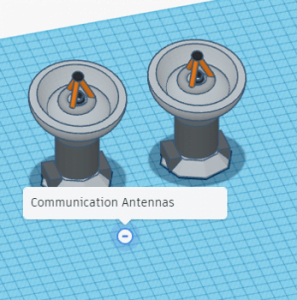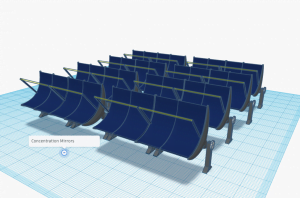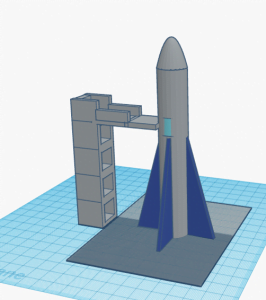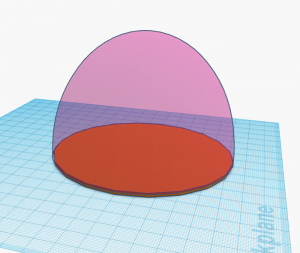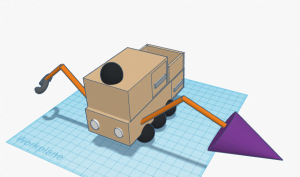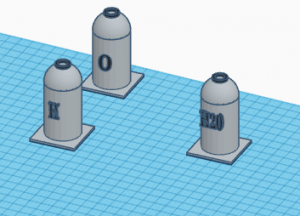Moon Camp Explorers Gallery 2020-2021
In Moon Camp Explorers each team’s mission is to 3D design a complete Moon Camp using Tinkercad. They also have to explain how they will use local resources, protect astronauts from the dangerous of space and describe the living and working facilities.
Team: KEK Station
John A. Sutter Middle School Winnetka United States 14, 13
External link for 3d
|
Project description
Our moon camp is designed to be habitable by two astronauts for three months. The base will be on the North Pole. This is useful because we will have more water handy and there are many lava tubes there. The main goal of our Moon Camp is to allow astronauts to do as much research, experiments and studying on the moon in three months as possible. We will do this by having study stations and mini labs throughout the camp for easy access. We will also have rovers roaming the moon and collecting samples and leaving the samples at the rover’s station, waiting to be analyzed. No research could be possible without ensuring the astronauts are safe and protected so we designed our camp to provide safety from asteroids, radiation, and more. Our moon camp is built with strong materials such as Kevlar and polyethylene, and has pools of water to protect them from radiation. We also have enough food, water and air to sustain them for three months. We will send and plant enough food to sustain both astronauts. Water will be used efficiently and mined from nearby water sources. Communication with Earth is also available. |
|||
|
Where do you want to build your Moon Camp?
Close to the Lunar Poles Why did you choose this location?
Our team will build near the Moon’s South Pole. Water is a vital part of our design and the South Pole has lots of water. We will use rovers to dig up the water ice. The South Pole also has areas that the sun shines for long periods of time. Almost constant sunlight mean power is available for us! How do you plan to build your Moon Camp? Which materials would you use?
Rovers will be sent before the astronauts to build the floors and walls of the Philolaus crater lava tubes on the North Pole where the astronauts will live. The rovers will use 3D printer equipment lay many layers 3d printed regolith so the astronauts don’t get cold. The rovers will be controlled by someone on earth. The rovers will also dig a deep unground emergency bunker to protect the astronauts from asteroids and radiation. A pool made to hold water will be 3D printed. The rovers will also build a garage for themselves to charge and stay protected. Explain how your Moon Camp will provide the astronauts with:
|
|||
|
Water
|
Food
|
Electricity
|
Air
|
|
Astronauts will use the Water Recovery System (WRS) that is used on the International Space Station (ISS). The WRS collects water from unite, sweat, and some moisture from the astronauts’ breath. The WRS recovers 93% of the water from urine, sweat and moisture from drinking and using water. Some of the water recycled will be used to produce oxygen using electrolysis. |
In our moon camp we will have a greenhouse to grow vegetables. We also have red and blue LED lights to keep our plants alive during long nights. These colored lights were found to improve plant growth in space. We will use the Aeroponic method to grow our vegetables. With this method, we won’t need to use soil or much water. This leaves more water to use for the astronauts. We will grow drought tolerant vegetables like lima beans, corn, herbs and more. These provide food and extra oxygen. Our astronauts will be able to have a quick meal by plucking these veggies. The soil will be made from composted waste. We even have dehydrated meals and food provided for our astronauts. With dehydrated foods, our astronauts will only need to add water to have a full meal in front of them. We will have these meals transported to the base every month by unmanned resupply landers. |
We will use solar energy or fuel cells. We will use two sources of energy in case a meteor hits the solar panels so we still a backup. Where will we be placing them? We discussed it as a team and decided to place the solar panels on the Shackleton crater rim where there is a lot of sunlight. |
Our rovers will scoop up regolith. We will heat the regolith to about 3,500 degrees Fahrenheit and use electricity to separate the oxygen from the metal in the regolith. We will use the oxygen for breathing and the metals to support building our moon camp. As a backup we will also get oxygen by growing plants and electrolysis of recycled water. |
|
Describe a day on the Moon for one of your Moon Camp astronauts
A day on the moon is almost the same as a day on Earth with just a bit of difference. After the astronaut wakes up they exercise to have adequate physical fitness and stay healthy. With no gravity bones and muscles get weak so exercise is important. When they finish exercising they eat breakfast. An astronaut’s meal should have proteins, fruits, vegetables, dairy and grains. The astronaut then checks if the plants and solar panel farms are working properly. After that, they send rovers to discover new areas and gather materials. Materials are transported to and from the Moon Camp. In the afternoon astronauts will take care of the vegetables, collect samples for research and send the data to Earth. By the end of the day, they can communicate with their family and go to sleep. |
|||


